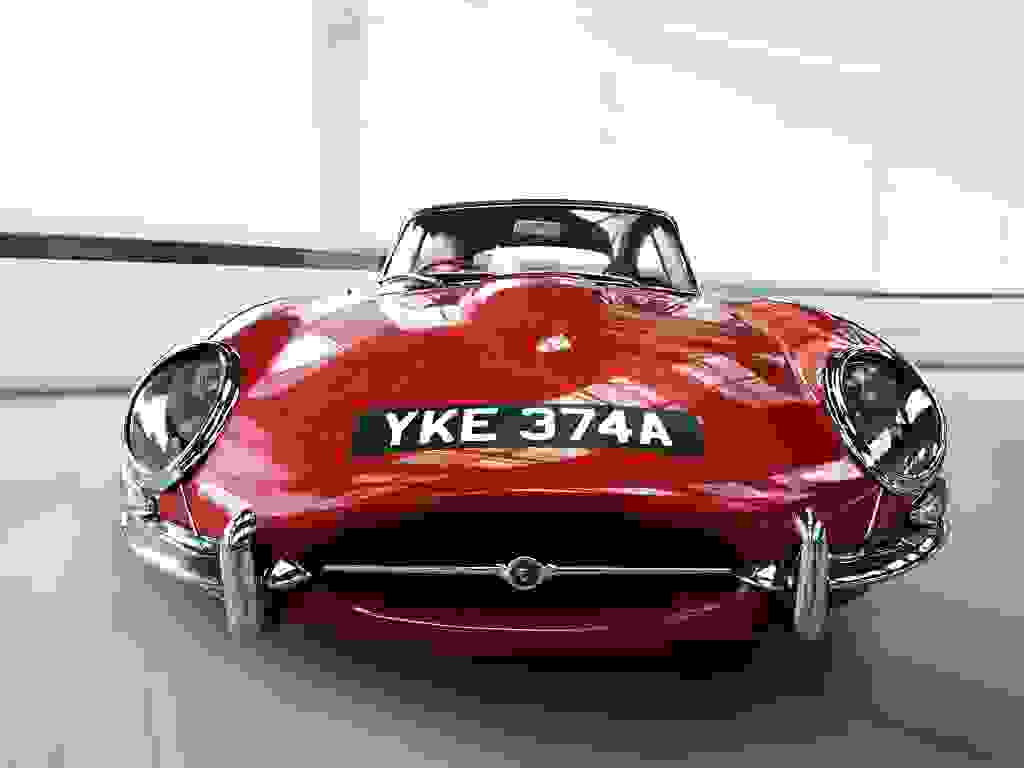
Some cars have the power to evoke emotion in the same way as a song or a work of art. Such is the case with the Jaguar E-Type, a model that was launched just over 60 years ago and is one of the most beautiful cars ever built.
On 15 March 1961, William Lyons, the founder of Jaguar, was anxious before the arrival of the journalists as his company was at a turning point in its history. Since 1948, his range of sports cars has been represented by the XK line (120, 140 and 150). However, their design was struggling to hide its age compared to the competition: it was time to move on to something new. And for this, Jaguar turned to engineer Malcolm Sayer, who had spent most of his career in the aeronautical industry before working for the British manufacturer. He had designed the D-Type racing car and was inspired by it to develop what would become the E-Type. The curvaceous body with a large one-piece bonnet and an aircraft cockpit-like interior were features it shares with the car that won Le Mans in 1955, 1956 and 1957. To show the car to the world's motoring press, Lyons organised an event at the Parc des Eaux-Vives in Geneva one day before the 1961 show opened. The bronze-coloured coupé, registration number 9600 HP, impressed the journalists with its beauty and impressive technical specifications. The Type uses the same engine as the XK 150 S, the 3.8 litre in-line 6 cylinder "XK" block. Fuelled by 3 carburettors, it developed 265 bhp, a decent level of power for the time.

Incredible epic
Rather than being shipped from England on a truck, the coupe was driven from Coventry; today, it is hard to imagine a manufacturer taking a prototype to a show by road! Given the success of the E-Type at the press launch, William Lyons feared a riot on the company's stand the following day. He telephoned Norman Dewis, the engineer, and ordered him to stop all activities and to come from Coventry to Geneva as soon as possible at the wheel of a pre-production English green E-Type convertible with the number 77 RW! He drove at high speed all night and arrived in Geneva the next morning after an incredibly dangerous journey, with no motorway or rest stops, something unthinkable today...

Beautiful and fast
Under the bonnet of the E-Type is the XK engine, a 3.8-litre in-line 6-cylinder DOHC engine developing 265 bhp. Capable of reaching a top speed of 240 km/h, the English car was as fast as the best sports cars of the time, but it cost far less. It was of little surprise that the Jaguar became an overnight success. Over the years, the car evolved with a 4.2 litre engine, which was replaced in 1971 by a large 5.3 litre V12 block. The car became more and more comfortable - perhaps at the expense of some dynamic sharpness- and was retired in 1975 after 67,300 units were produced.

Jaguar's flagship model, the E-Type is a classic in the collector's market. The advantage is that all its parts can be reproduced, which makes restoration much easier. Beware of the many 'restorers dream' cars imported from the USA. They are often worn to the bone and require a lot of work and an equally high budget to get right. The 6-cylinder cars are the simplest mechanically; the V12 is a real gas guzzler and should be reserved for the most experienced collectors. The 2+2 coupes are the least sought after and the most affordable, starting at around R770,000 in perfect condition. For a 2-seater coupé, expect to pay around R200,000 more. As for the V12s, the more sought after convertibles start at R1.5-million. The 3.8 Series 1 E-Types, which can be identified by their flat floors and aluminium dashboard, can be found in the R1.7-million range in the coupé version and can reach double that amount for convertibles, ideal for enjoying the sound of the 6-cylinder engine!





















